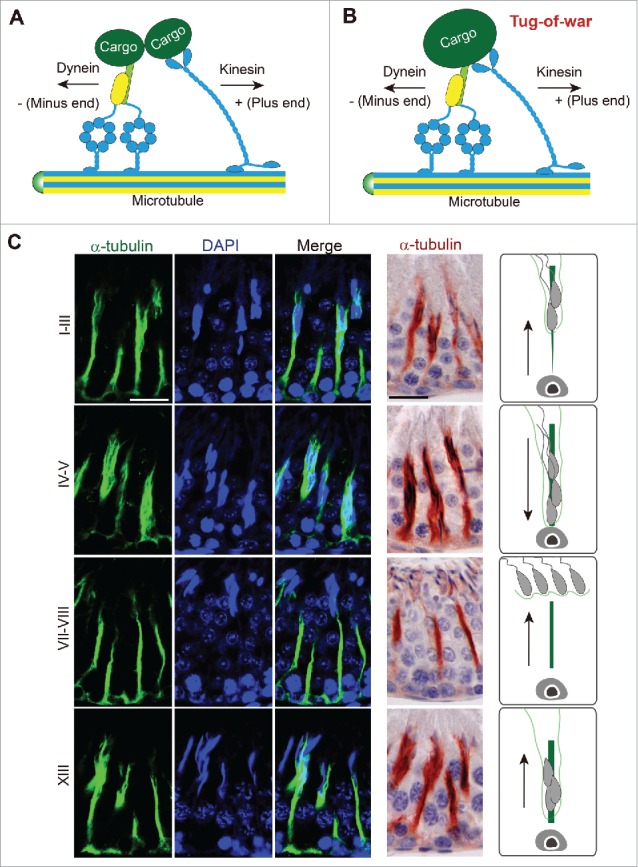Figure 2.

Dynein-dynactin-cargo adaptor complex and microtubule (MT)-based cytoskeleton to support spermatid transport in the testis. (A) The dynein-dynactin-cargo adaptor complex that binds to the MT-conferred track to support cargo transport, including spermatids so that the cargo (i.e., spermatid) can be transported along the MT-based track. The dynein-dynactin-cargo adaptor is responsible to transport cargo to the minus (-) end of the MT track but the kinesin is responsible to transport cargo to the plus (+) end of the MT track. As such, cargo (e.g., spermatid) can be transported across the seminiferous epithelium during the epithelial cycle depending on the polarity of the MT-based track vs. different motor proteins. (B) It is noted that the dynein-dynactin-adaptor complex and the kinesin can compete for the same cargo in a tug-of-war. The eventual winner to move the cargo either to the – or + end of the MT-track is determined by protein kinases, phosphatases and/or Rab GTPases associated with the motor protein which modify the activity of a motor protein through changes in the adaptor proteins or other microtubule-associated proteins (MAPs, e.g., +TIP or –TIP proteins) at the site. (C) A study by fluorescence microscopy that illustrates the presence of track-like structures conferred by MTs, as noted by α-tubulin (green fluorescence), the building block of MTs, in the cross sections of the testis in tubules at different stages of the epithelial cycle (left 3 panels). Scale bar, 60 µm, which applies to all other micrographs in this panel. α-tubulin is also visualized by immunohistochemistry in which MTs appear as reddish-brown precipitates (fourth column from the left). Scale bar, 60 µm, which applies to other micrographs in this panel. The last column is a schematic drawing illustrating the directional transport of spermatids in the specified stages. This experiment was performed using the reagents and antibodies reported earlier from our laboratory.8
